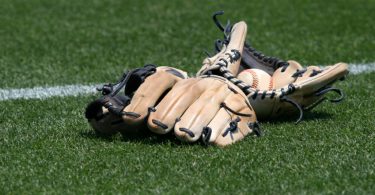By Eric del Prado
Hey guys, this is Eric del Prado. I wrote a Letter to My High School Self article in which I shared lessons I learned about the recruiting process and college baseball. I finished playing Division 3 baseball and now coach at a Division 3 program.
The purpose of this article is to shine a little light on what a day in the life of a Division 3 baseball player looks like. Since many programs have already started practicing or are about to start, I will give you a look at what an in-season day would look like for me. Each day was a little different with the class schedule and lifting, but for the most part it followed a similar pattern. I went to class, lifted and hit before practice, and then did homework after practice. It was a routine that worked best for me. Here’s what a typical schedule looked like for me:
8:45- Wake up and eat breakfast
9:40-11:10 Class
11:10-11:40 Lunch with teammates
11:45-12:45 Lift
12:50-2:20 Class
2:20-2:40 Get ready for practice
2:45-3:30 Hit before practice
3:30-5:30 Practice
5:30-7:00 Eat dinner and relax
7:00-11:00 Head to the library and do homework
Every college player’s schedule changes a little bit each day depending on class and lifting schedule, but every day your time has to be very regimented. I have observed that the best student-athletes follow a schedule each day that maximizes their time. Without a schedule it is easy to “feel tired” and push things back to the next day. But in reality, the best players do things when they do not feel like it because they know it will benefit them in the long run.
Having a schedule really comes into play when you are at an academic D3. The classes sizes are small and many professors usually know you by your first name and that you play baseball by the end of the first week of classes. Because class sizes were small, around 15-20 students, you had to be prepared every day for discussion, and “I had practice so I could not read,” was not an excuse. You were expected to be in class every day and the only reason to miss class would be for a game, which did not happen very often. Each spring semester we missed an average of 2 classes. For example, during my sophomore year we played a double header on Sunday in Walla Walla, Washington, a five-hour drive from my school. We got back to campus around midnight, and I was expected to be in my 9:10 AM class on Monday, with the reading done and ready to participate in group discussion.
Given the need to coordinate, it is easy to create a good relationship with many of your professors if you are up front and honest about your schedule. Professors would be more than willing to help you out on the few days you missed if you told them in advance that you would not be in class that day and planned to get notes from a classmate. This was also a good opportunity to go into their office hours and have them go over anything that was not making sense to you.
On the other end, coaches also understand the importance of an education at an academic D3. We were never asked to miss class for practice or not schedule classes at a certain time due to practice. At Lewis and Clark College, where I currently coach, we understand the importance of class time and schedule our practices throughout the day. For example, we have individual offensive and defensive work from 12-1 pm on Tuesdays and Thursdays and do team defense from 6-7 pm. Our head coach understands the rigor and importance of school and does the best he can to try and accommodate everyone.
Considering what your day will look like if you attend different types of programs is an important consideration for the recruiting process and will help you find a program where you will be happy. As you get a feel for what a day in the life looks like at different types of programs, you’ll want to consider your goals and priorities and make sure daily life matches with what you want in a college experience. Good luck!







